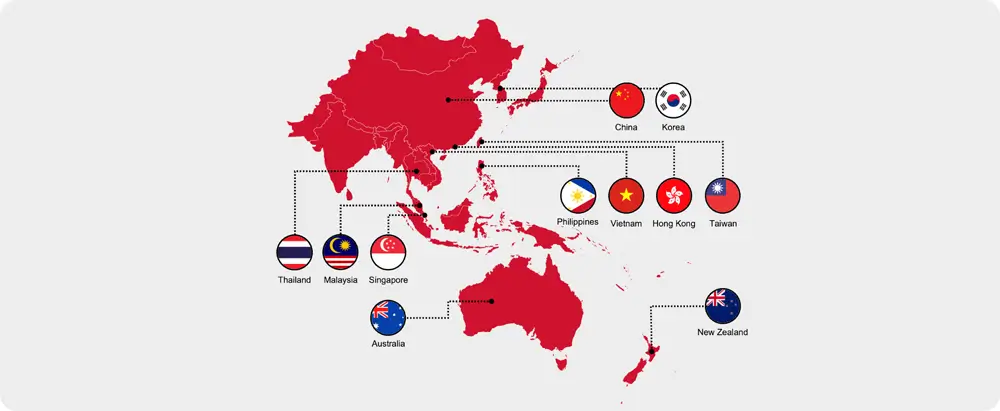How to stay ahead of e-Invoicing standards and regulations

Around the world, a steady stream of governments are legislating or mandating electronic invoicing (e-invoicing) as a standard operating procedure.
For governments, it's an opportunity to address tax leakages and improve revenue, ensuring accurate reporting from organisations and businesses.
For organisations, it’s imperative to ensure compliance—but with the benefits of streamlining the accounts payable (AP) processes and reducing costs.
In this blog post, we'll examine the current state of e-invoicing, its challenges and opportunities, and how you can navigate the requirements and complexities of e-invoicing.
Key challenges and opportunities in e-invoicing adoption
Managing complex regulations and standards is just one of the global challenges facing businesses today.
Changes to government legislation are moving quickly in an attempt to keep pace with the rapid development in technology available for businesses.
E-invoicing regulation is a high priority as it allows governments to reduce fraudulent activity, gain additional revenue from accurate taxation, and gather more data on business trends.
Navigating e-invoicing mandates around the world
More than 100 countries have implemented B2G (Business to Government) e-invoicing legislation. Many are now also introducing mandatory e-invoicing on all B2B transactions.
For example, South Korea has made e-invoicing mandatory for all B2B transactions, while Japan’s tax authorities require e-invoices to be validated by their offices first. Indonesia have adopted e-invoicing frameworks, while China is trialling its e-invoicing systems across its many regions.
And Malaysia is implementing mandatory B2B e-invoicing this year. It will become a legal requirement for companies with an annual turnover of MYR 100 million and above in August 2024, before being rolled out to all organisations the following year.
This means having the right e-invoicing solutions and processes is no longer optional for businesses—it is necessary for businesses to stay operational, compliant, and competitive across borders and regulations.
Without these processes in place, you may face fines from the government, be unable to trade with certain organisations or even run your business at all. So, it’s important that organisations plan for this migration now.

APAC countries with e-invoicing legislation
Integrating e-invoicing into the AP process
Another challenge is integrating e-invoicing solutions with existing systems and workflows. This is a complex and time-consuming process requiring significant IT resources and expertise. Businesses will need to consider the feasibility of procuring new hardware, software, and additional training for their personnel, against managing and adapting pre-configured cloud solutions that can reduce capex and hardware maintenance costs to their workflows.
The key lies in finding a capable and experienced partner who can help you effectively manage the transition to e-invoicing, as incorrect implementation could potentially take down your accounts payable process, leaving you unable to accept payments.
However, the right partner can guide you to a solution that will reduce costs and improve business efficiency while enhancing supplier and customer relationships through faster payments.
The beneficial impact of e-invoicing

While compliance makes a transfer to e-invoicing a necessity for most organisations, it has become a crucial driver in digitising business operations.
Automating the invoicing process leads to reduced errors and eliminates manual data entry. It also enables real-time invoice tracking and monitoring, making managing cash flow easier and improving financial performance.
e-invoicing also strengthens security by minimising human touchpoints and creating automated, auditable records. This makes internal fraud significantly harder, as there are fewer opportunities to manipulate data and falsify records.
It also reduces external phishing attempts, as emails requesting payments are eliminated from the AP process, making them easier to spot and report.
E-invoicing enables companies to save significant processing time and resources, creating a more secure end-to-end AP process. The positive impact of e-invoicing on businesses are significant.
Why e-invoicing solutions are a must-have for modern businesses

As tax authorities worldwide are introducing new e-invoicing and digital reporting mandates over the next four years, e-invoicing is the way forward. Businesses need to prepare and migrate sooner rather than later.
In return, e-invoicing offers improved operational efficiency, from reduced costs and faster payment cycles to enhanced business intelligence and better business relationships.
Streamline your AP processes, reduce errors, and improve compliance by partnering with an established provider like Ricoh. Leverage our cutting-edge e-invoicing solutions to get ahead of the competition.
With features like automated data extraction, intelligent routing, and real-time reporting, Ricoh's e-invoicing solutions empower businesses to work smarter, not harder.
Simplify e-invoicing with Ricoh. Discover how we can secure your electronic invoices and ensure compliance with regulatory requirements.
Vijay Kumar A/L Victor
Portfolio Marketing Lead - Digital Workflow & Automation, APAC
With over 20 years of experience bridging the gap between people and processes, Vijay has transformed organisations across various industries.

Let’s connect
Talk to a Ricoh expert. Find out how we can help you streamline workflows and automate processes for higher efficiency and productivity.
Recommended resources for you

Is a Single Source of Truth for Company Knowledge Possible?

Taking a more intelligent approach to the office: Five trends that will impact Australian workplaces in 2025

Unlock the Future of Workplace Experience with Our Buyers Guide
Are you ready to transform your workplace into a hub of innovation and productivity? Download our comprehensive Buyers Guide for RICOH Spaces.



